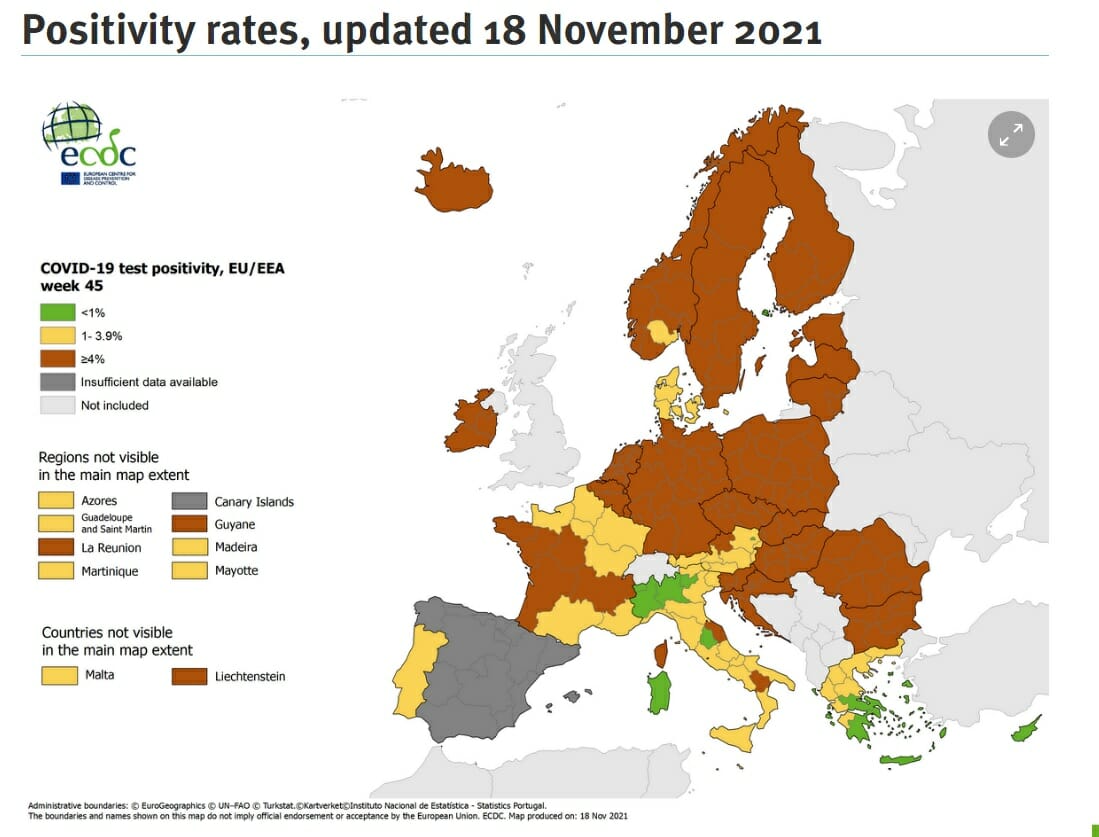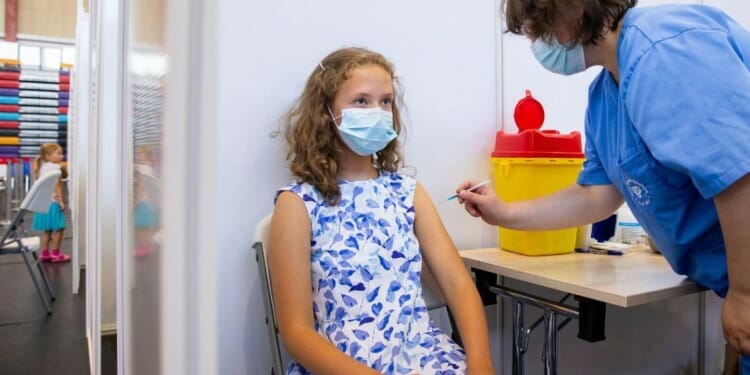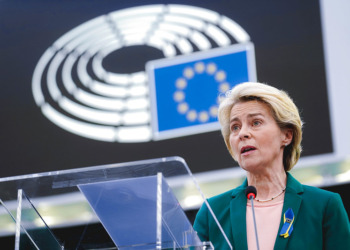The 4th wave of COVID is now sweeping across Europe, and full lockdown, which seemed like a (remote) possibility two weeks ago when I first wrote about it, is now a near-certainly in a number of countries. Although not where anti-vaccination movements have successfully stopped attempts at establishing public health measures to protect from the virus, notably in Poland.
Here’s a quick round-up of the situation. First looking at the spread of the virus in Europe, then at how various countries are reacting.
Six weeks of rising contagion
Overall, this map based on bi-weekly data (useful for traveling across the continent) shows how the situation looks as of November 18, 2021, according to the European Center for Disease Control and Prevention (ECDC).

According to figures from OurWorldInData, the EU’s average has quadrupled in recent weeks, from just over 110 daily new cases per million people on 1 October to 446 on Thursday.
The ECDC has also set up a useful weekly surveillance system which gives a good sense of where this 4th wave is going. For the week ending Sunday, November 14 (week 45), the overall COVID-19 case notification rate for the European region was 473.8 per 100 000 population compared to 387.5 the previous week.
The ECDC notes that this rate has been increasing for six weeks. On a more optimistic note: The 14-day COVID-19 death rate (40.0 deaths per million population, compared with 37.8 deaths the previous week) has been stable for one week. No doubt this is partly a result of “knowing the disease better” and being able to come up with better treatment.
Yet the pressure on hospital facilities is increasing. Of 29 countries with data on hospital or ICU admissions or occupancy up to week 45, 20 reported an increasing trend in at least one of these indicators compared to the previous week.
The ECDC characterized the situation as follows:
- very high concern in Croatia, Czechia, Greece, Hungary, Poland and Slovenia;
- high concern in Austria, Belgium, Bulgaria, Cyprus, Denmark, Estonia, Germany, Iceland, Ireland, Latvia, Liechtenstein, Lithuania, Luxembourg, the Netherlands, Norway, Romania and Slovakia;
- moderate concern in Finland, France, Malta, Portugal and Sweden
- low concern in Italy and Spain.
The UK., while not on this list, is not doing well. While Slovakia or Austria have worse figures, the UK has topped the EU average for months. The infection rate has climbed by about 15% over the past 10 days, from a base that since June has been consistently higher than the European average, as this graph from the UK Guardian shows:
Country response ranges from a maximum of precaution with full lockdown (Austria) to no response (Poland)
Austria: A nationwide lockdown has been announced by the government, starting Monday. “Nobody wants a lockdown — the lockdown is the very last resort, a crude instrument,” Health Minister Wolfgang Mückstein said. “A lockdown is always an imposition, but it is the most reliable instrument we have to break this fourth wave.”
Also, and this is notable as Austria is the first country in Europe to do so, the government plans to impose obligatory Covid vaccination, starting in February. The reason for such a measure is obvious: Austria also has one of the lowest vaccination rates in Western Europe, with 66 percent of the population fully inoculated.“For a long time, the political consensus has been that we do not want compulsory vaccinations in this country,” Mr. Schallenberg said when announcing the new measures. “But we have to face reality.”
The lockdown is a return to the first dark days of the pandemic. People will be allowed to leave their homes only for the purpose of shopping for groceries, going to work or getting a basic level of exercise. All stores, restaurants and other public spaces for entertainment will be shut down and only supermarkets and stores selling essentials will be allowed to remain open.
Germany: On Thursday, following a heated debate in Parliament, new restrictions were imposed on the unvaccinated. “It is absolutely time to act,” Merkel said, speaking of the “very worrying” situation. And once again, she stressed that Germany would be “better off” if the “vaccination gap wasn’t so big.”
In fact, the new measures are directly aimed at the unvaccinated with so-called “2G” restrictions in those regions where a certain hospitalization rate is exceeded – with “2G” referring to a system that allows free movement for leisure activities only for the “geimpft oder genesen” — “vaccinated or recovered.”
Italy: A “double-track” policy is under consideration: issuing a “super green pass” for those who are vaccinated or recovered, for unrestricted access to public spaces and another pass to be obtained with the Covid test, to go to work. For now, only two regions in the country, Alto Adige and Friuli – the northern border on the Alps – are most at risk of restrictive measures.
But in Italy, restrictive measures are not to be equated to a lockdown. Unlike in Austria, it would mean going back to the color-coded system the country had adopted last year for its regions as a response to the pandemic, from red (maximum alert) to white (no restrictions). Giving a “yellow” color to the two regions would mean that residents (and visitors) are required to wear masks everywhere they go, including outdoors. And limitations would also be imposed on the capacity of cinemas, theaters and stadiums while discotheques would be closed.
However, there would be no curfew. Nor would any shops or businesses be required to close, and there would be no travel restrictions. In short, if it is going to happen to those two regions, it would be a “soft” lockdown.
Greece, Czech Republic and Slovakia: Starting Monday, Greece is toughening rules, requiring proof of immunization for more venues, including cinemas, theaters and gyms, and passes for those over 60 will be tied to booster shots; both the Cezch Republic and Slovakia took similar steps.
The rest of Europe: Still talking about it and tightening some restrictions, here and there. For example, in Sweden, proof of vaccination is now required to attend large public events but the chief epidemiologist said this may not be enough.
The UK appears more intent on watching what is happening on the continent rather than doing anything, with Boris Johnson speaking this week of “storm clouds gathering” over Europe, adding it was “unclear” when or how badly this 4th wave would “wash up on our shores”. For now, the government does not appear ready to do much beyond rolling out a round of booster shots that has been described as “shambolic”, reportedly leaving many immunocompromised people without adequate protection.
Meanwhile, Poland is at the other extreme, planning no new restrictions for now even though the virus is spreading and vaccination rates are still relatively low.
Where is the EU in the meantime? Coordination will have to wait as the virus surges. Expectations are that it will feature as a priority on the agenda at the next EU summit scheduled for mid-December, with half a dozen countries reportedly raising the need for a common approach for boosters.
Everywhere in Europe, people protest the new measures, feeling they are unacceptable restrictions on personal liberties. And undoubtedly, everyone suffers from pandemic lockdown fatigue and frustration. Yet a crucial question remains: How to address the problem of the unvaccinated as the evidence accumulates that they are both the ones most at risk from the highly-contagious Delta variant and (largely) the cause of the 4th wave of the pandemic. Where vaccination rates are high – around or beyond 80 percent, as in Spain – contagion is also rising again, but the 4th wave is (for now) barely more than a ripple and in any case, not as serious a threat.
Experts vary in their predictions as to when the pandemic might end – 10 years, 15 years, never. As Fritz Rosendaal, professor of clinical epidemiology at the Leiden University Medical Centre, said “we need to get more people vaccinated” and he pointed to the example of Israel that vaccinated children and administered booster shots. When all the children are immune, the pandemic could go the way of the Spanish flu. And then, as Rosendaal said to Dutch News, “this could be the last winter. At some point, all kids will have had it. But I don’t know.”
Editor’s Note: The opinions expressed here by Impakter.com columnists are their own, not those of Impakter.com. — Featured Photo: Child vaccinated – from Euronews article about the “race” of child vaccination in Europe










